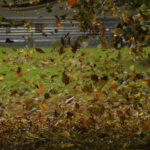I hear & behold God in every object, yet understand God not in the least. – Walt Whitman
This is another of the Twitter friendly, shortened quotes. The full quote goes like this:
“I say to mankind, Be not curious about God. For I, who am curious about each, am not curious about God – I hear and behold God in every object, yet understand God not in the least.”
What does that mean?
To me, this speaks of the finite nature of humanity, our finite senses, our finite capacity for understanding and reason. It also speaks of the infinite nature of God and the universe. I won’t get into the theological arguments (that’d be a different blog, on I am not interested in writing).
But to me, God and the universe, in addition to being infinite, are both infinitely beautiful. From the microscopic to the macroscopic, the structures of DNA to the structures of galaxies, and everything in between. The beauty is everywhere, and for all to see and behold. Understanding, that’s a whole different thing, isn’t it?
Why is beauty important?
Beauty, in this case, has an aspect of wonder. Things are so beautiful and so complex as to defy understanding. From the inner workings of cells to the intricate web of stars that make up galaxies, the universe has infinite beauty. To me, it helps to reaffirm my belief in a deliberate creation of the universe.
It also shows the beauty of math (such as the spirals in the center of flowers, like the sunflower), the beauty of chemistry (anything bio-chemistry, especially cellular energy production), and the beauty of physics (the symmetry and cleanliness of the fundamental principles).
Where can I apply this in my life?
Well, unless the universe or God is reading this, you probably won’t be able to create a new bit of beauty yourself. But if you are willing to cultivate beauty, notice and observe beauty, and appreciate it, that is what we will focus on today.
Have you ever looked at a tree in winter, barren of leaves and marveled at the structure of the branches? Each tree in a forest is both the same and different at the same time (back to math, fractals in specific). Do you see the beauty in the winter tree, or only when it is covered in leaves?
Next time you see a tree, take a moment and observe it, sense the beauty of it, the structure and size of it. Consider the age of it as well – have you ever seen a tree that is 500 years old? How about one that is 1000 years old? There is beauty and majesty in that kind of age as well, can you feel it?
What of a mountain? Have you ever seen a mountain in person? You’ve seen one on TV or on the web, right? Have you ever considered how big that really is? Most mountains start piled up on top of nearby mountains or foothills. Most of the Rockies start with their bases at over 5000 feet, many don’t start until much higher.
Pick up a rock. Then imagine the time and effort required to pile rocks on top of rocks to reach that height (yeah, I know that’s not how it’s actually happens). That’s a lot of rock, and it weighs quite a bit, too. And have you ever considered the visual aspects of the peaks, the trees, the snow and even the ecosystem that exists only at those great heights? Again, I find beauty, do you see it?
Have you ever looked through a telescope? You’ve seen pictures from the Hubble Space Telescope on TV or on the web, right? The structure in Novae, Galaxies and Clusters is amazing. Even the Moon or the planets (and their moons) are amazing to look at. Have you seen some of the closeups of Jupiter and the Great Red Spot? How about the impacts created by the comet a few years back?
What of the Jovian moons? Some of them are beautiful and alien, both beyond words. And Saturn? WOW! How about that ring system? All the intricacies of the shepherd moonlets, the thinness of the bands and all the details shown by the NASA probes, stark raving beautiful!
Back on Earth, how about flowers? How many flowers can you recall? I gave you sunflowers at the top, and you probably know roses, but how many others can you name? How many can you recognise? If you’re like me, you can name a dozen or two, but most you just recognise as you go past.
How often have you actually taken the time to smell them, you know, like the saying “take time to smell the roses”? Take one flower you can think of (or quick, look one up online). Look at the structure, the patterns of the pedals, the markings on them. Look at the structure of the interior, where the business of reproduction is done. Beauty concealed within beauty.
How about the birds and the bees? If you’re looking at flowers, you’re going to see a few bees, and hear a few birds. Have you ever taken the time to listen to a songbird? They can be found online, if you can’t recall what one sounds like (and no, crows don’t count).
The sounds, the intricate melodies and rhythms, are amazing. Even more so in spring when they are trying to find a mate, and several will call back and forth. The buzz of the bees visiting flowers is a thing of beauty, especially since I saw a lot of bumble bees growing up.
Back then, no one understood how bumble bees could fly, as everyone said they shouldn’t be able to. Guess no one told the bees. The sounds of beauty, kind of an odd application of the word, but it works for me. How about you, what sounds do you consider beautiful? Not just pleasant, but beautiful.
So, by now we should have some ideas what each of us consider beautiful in nature, and have some clues as to what to do to appreciate it where it exists. Now, how does one cultivate it?
Depending on your climate and the green-ness of your thumbs, you could grow some flowers, anything from pretty little Pansies to great big Sunflowers. But almost everything that is green has blooms. Even cactus. Perhaps you just want to grow a small pot of flowers by the kitchen sink. Try the floral section of your local grocery store for a small potted rose plant or some other live plant for your home.
If you spend time outdoors in the yard, or with the windows open, perhaps you might cultivate beauty in birdsong by selecting a species of bird that is of interest (there are any number of web sites and organizations that can help, I leave the determination of the best birdsong as an exercise for the reader). Find out where they like to nest, and how to build a structure to attract them.
If you just want them to visit instead of live there, look into what kind of feed they like and how to keep the other creatures out of the bird’s food. Perhaps you find the sounds of a parrot, parakeet or some other indoor birds to be beautiful. Your local pet shop can provide you with quite an education about these birds, and even provide (for a nominal fee) everything you need.
If you’d rather spend time in the bird’s house, you could stop by a binocular shop (most sportsman stores have sections for birding) and get a few tips and info on when the local groups get together to look and listen for birds in your area.
Well, I hope you have taken some time to consider what you consider beautiful, and how to spend more time with those things. Life is short, enjoy the beauty it contains while you can.
From: Twitter, @Inspired_Ones
confirmed at: http://www.brainyquote.com/quotes/quotes/w/waltwhitma146863.html
Photo by ingridtaylar







